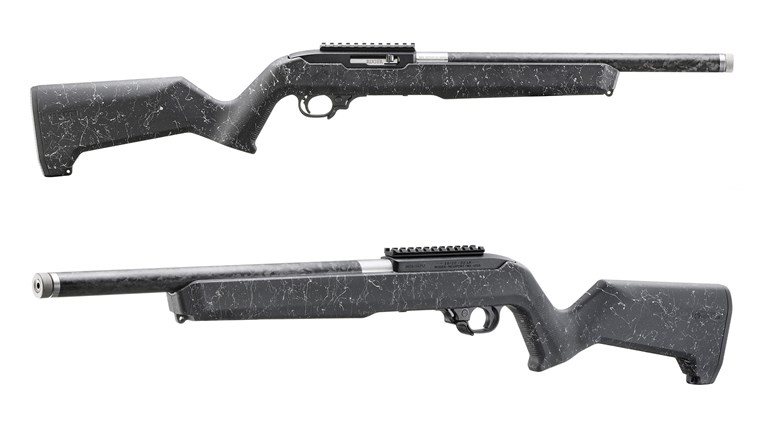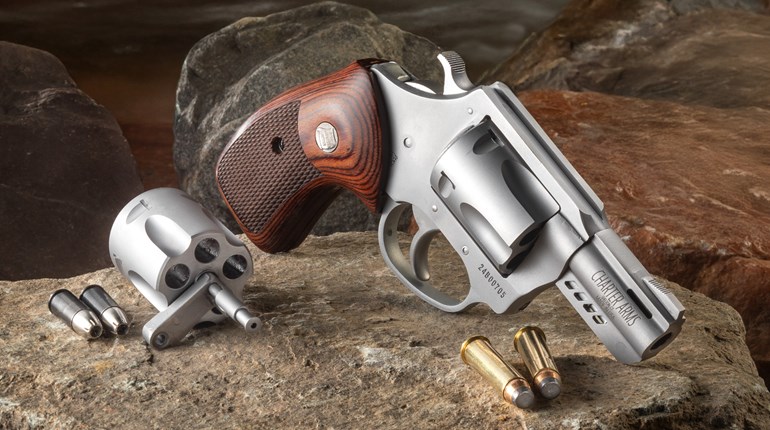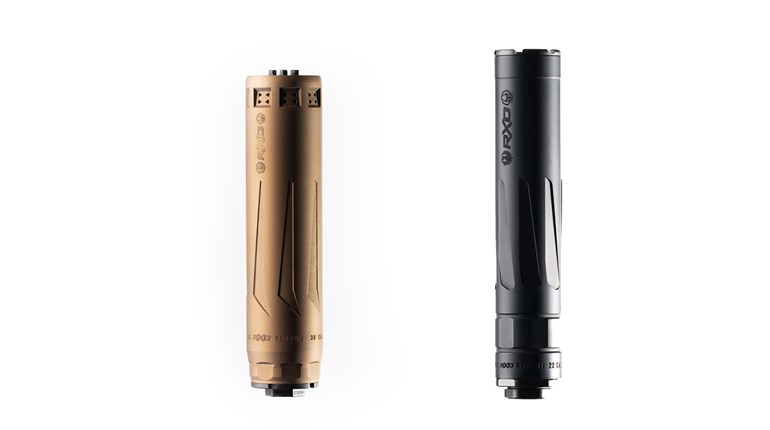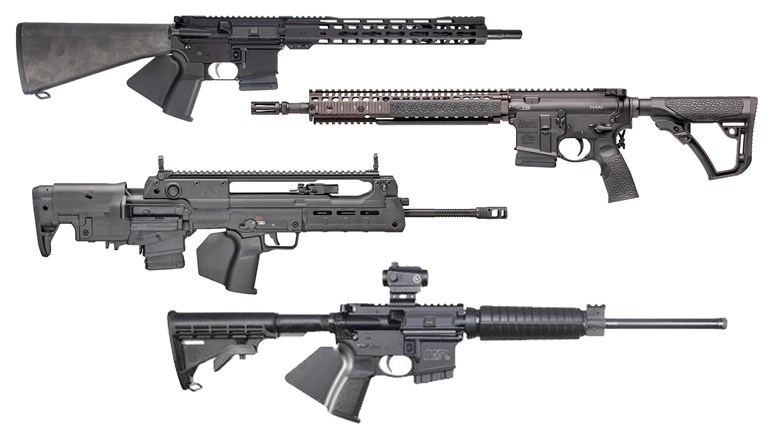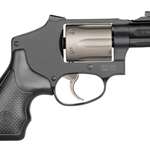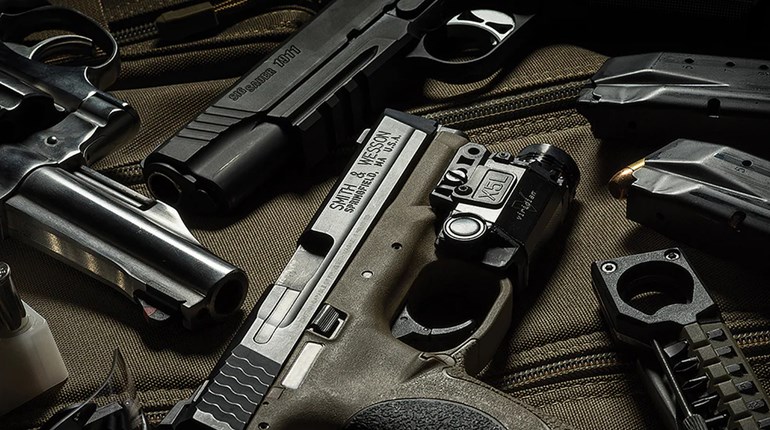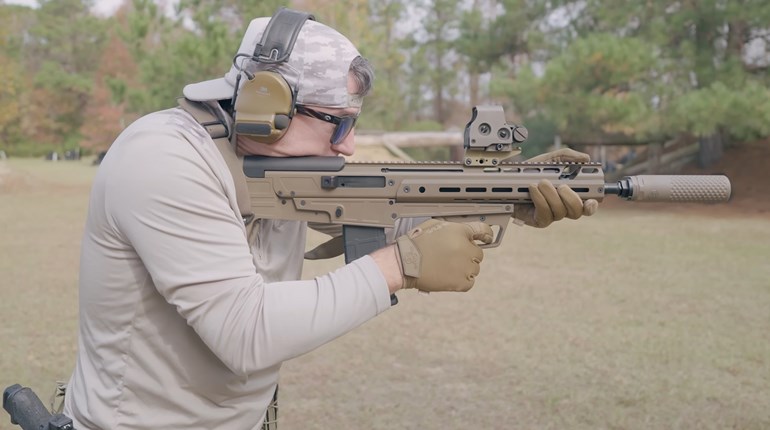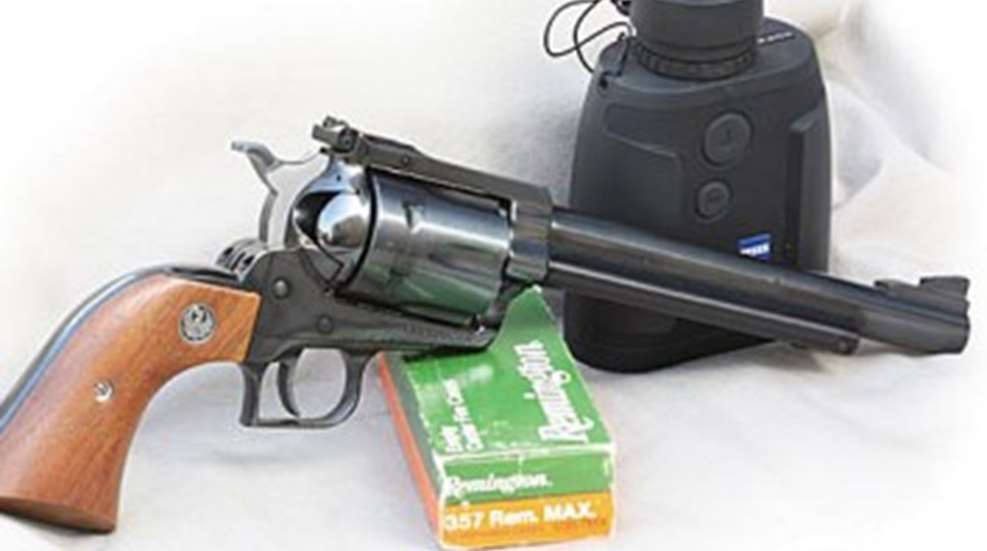
In 1983, Ruger introduced its New Model Blackhawk chambered in .357 Maximum. It was a .357-caliber revolver utilizing a cartridge case .315 inches longer than a standard .357 Mag. The cartridge—intended for handgun hunters and metallic silhouette shooters—was designed to generate energy levels comparable to the .44 Mag., but without the recoil. After two years of production, Ruger stopped manufacturing this high-performance handgun. Before examining the pros and cons of the Maximum, let's look at the characteristics of the two different revolvers.
Many of us handgunners began our centerfire career with the original Ruger Blackhawk. The new Maximum featured a longer cylinder than earlier guns, with a frame sized appropriately for the stretched cartridge and cylinder. To fully eject the longer Maximum cases, both the ejector rod and its housing were lengthened. The grip frame was steel and manufactured in the Dragoon style introduced earlier on the original Super Blackhawks chambered in .44 Mag. I had never been a fan of the squared trigger guard on the .44 Mags, simply because the gun's recoil drove the back of the guard into the knuckle of the middle finger of my shooting hand. This didn't happen with the softer-shooting .357 Maximum. Due to the Maximum's higher pressures, the topstraps were thicker and extra metal was added around the barrel threads. You had a choice of two barrel lengths when purchasing the .357 Maximum; either a 71⁄2-inch barrel, or a 101⁄2-inch, bull barrel. The shorter barrel came with a standard Ruger adjustable rear sight and a black, ramped front sight blade. The 101⁄2-inch model had an undercut, target-style front sight, while the adjustable rear sight's blade had a narrower notch commensurate with the greater sight radius. Both guns featured wide spur hammers and wide, serrated triggers. The Maximum's reduced felt recoil was due in large part to the 53- and 55-ounce weights of the 71⁄2-and 101⁄2-inch guns, respectively.
The performance of the .357 Maximum on handgun silhouette ranges was impressive. The guns' problems were associated with an apparent inconsistency in choosing the cartridge's priority mission. The book "Ruger and His Guns," lists specifications for the .357 Maximum performance as, "158-grain semi-jacketed hollow point bullet, with a muzzle velocity of 1,825 feet per second, and 1,168 foot-pounds of energy; at 100 yards the velocity was at 1,381 f.p.s., and 669 foot-pounds, with a mid-range trajectory of 1.7." Unfortunately, Remington (the ammunition developer and manufacturer) was turning out factory ammunition with 125-grain jacketed hollow points, while silhouette shooters wanted heavy bullets that arrived at the 200-meter rams with maximum momentum. The book also states, "Although factory testing included firing tens of thousands of rounds of commercially loaded cartridges, along with a variety of specially formulated handloads, in several production revolvers, problems subsequently developed with barrel erosion, as well as erosion of the topstrap…which led to withdrawing the Maximum revolver from the production line."
While the full power of the Internet hadn't been realized in 1985, popular writings of the time suggested the erosion problems were related more to the high-velocity, light-bullet loads than the heavy bullet loads. By the mid-'80s, my handgun-silhouette career was nearing its end, but I did spend some time on the range with the 101⁄2-inch barreled Maximum and really liked it. With handloads of 180- and 200-grain cast bullets, 50-yard groups ran 21⁄2 to 3 inches with muzzle velocities around 1,570 to 1,645 fps. Using 158- to 160-grain jacketed bullets, groups were about the same size if velocities were less than 1,800 fps. When Ruger pulled the plug on the .357 Maximum I sold my long-barrel model to a friend who was still actively engaged in silhouette competition.
Looking back, I'm disappointed I didn't pursue the handgun-hunting potential of the .357 Maximum further. Part of my problem at that time was that bullet companies were not researching the development of a .357-caliber hunting bullet suitable for the performance potential of a .357 Maximum revolver. Major companies like Ruger don't produce handguns unless a major ammunition company is committed to manufacturing compatible ammunition. Admittedly, hard-cast lead bullets have a devoted following in the big-game handgun hunting community, but this is with bullets having diameters greater than 4 inches. While the .357-caliber, 200-grain RCBS cast bullet has great energy-retention ability, its reduced diameter doesn't create a large enough hole in big-game animals to satisfy many hunters. In conjunction with this column, I did load up some 158-grain Sierra jacketed soft points for a Wyoming antelope hunt using an iron-sighted Ruger .357 Maximum. Unfortunately, I couldn't get closer than 125 yards to a buck that left the county the moment I rose slightly from behind the sage.
While I'm sure the cartridge/gun/load combination would have been adequate to harvest an antelope, a published success would not motivate today's manufacturers to rejuvenate the .357 Maximum. The tragedy here is the caliber offers the same advantages to today's handgun hunter or aficionado it offered in 1983: energy levels comparable to the .44 Mag. with a flatter trajectory and less recoil. Considering that many handgunners never really master the recoil of heavy loads in .44 Mag. revolvers to where they can hunt confidently and competently, I think the .357 Maximum might entice more hunters to give big-game handgun hunting a try.
Admittedly I'm in a privileged position. Thanks to Randall Pence of Ruger, who made two .357 Maximums from his private collection available for this effort, I will get another opportunity to explore, through handloads, the possibilities of hunting with this intriguing cartridge.
However, I think there is cause for some optimism regarding a possible future that includes the .357 Maximum. Ruger may never bring it back, but the company still has all the tooling. And in the past few years, Ruger has launched a number of new guns working in conjunction with Hornady to develop the ammo. Given a modicum of interest and perhaps a bit of R&D activity at Hornady, who knows what may happen. Both companies are heavily backordered on existing product, which is both good news and bad news, so the likelihood of a near-term release doesn't seem high, but neither is it out of the question.
And then there is Smith & Wesson's X-Frame, the big 5-shot revolver that easily handles cartridges much larger and more powerful than the .357 Maximum. It's my understanding that sales of X-Frame revolvers have greatly exceeded the company's expectations. So what would happen if you take the world's most powerful handgun and make it available in a caliber almost every handgunner can shoot comfortably? And what if this "new" caliber offered some special incentives for handloaders? Perhaps this gun would take off in sales, something that excites executives of all companies. Or perhaps I need to change prescriptions and face reality. But I have that pair of .357 Maximum Rugers and lots of reloading gear. My campaign isn't over.












